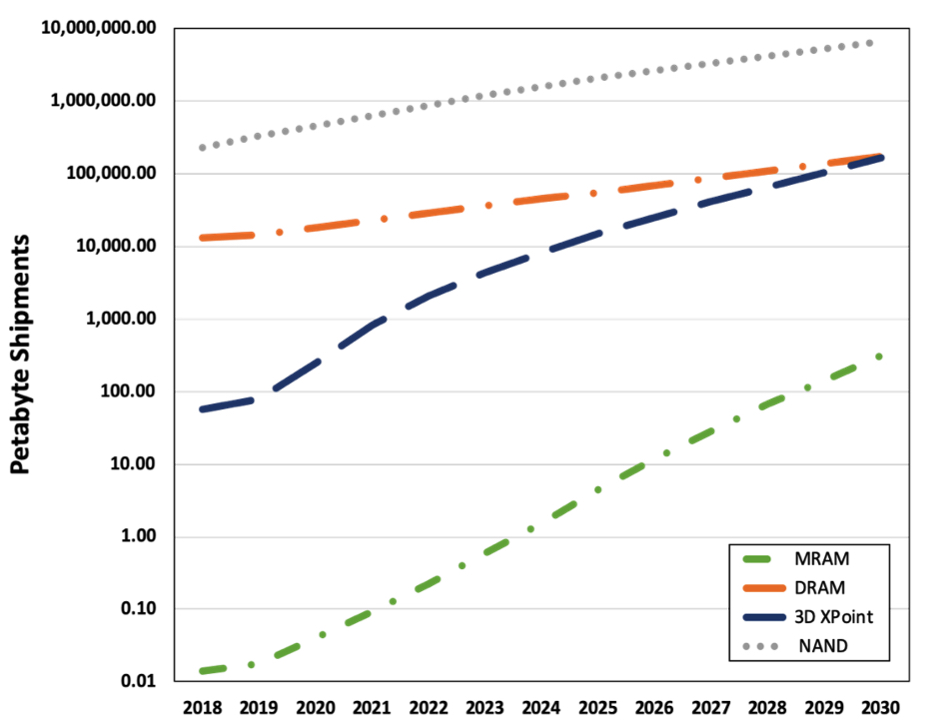Emerging Memory Market to Hit $36 Billion by 2030
Largely by displacing current technologies including NOR flash, SRAM, and DRAM
By Jean Jacques Maleval | June 11, 2020 at 2:26 pmEmerging memories are well on their way to reach $36 billion of combined revenue by 2030 with manufacturing equipment revenue at $696 million.
That’s the finding of a report by Objective Analysis and Coughlin Associates: Emerging Memories Find Their Direction ($7,500, 203 pages).
Companies that participate in the memory markets and foundries need to pay close attention to these evolving changes or they will be left behind when the transition occurs. Designers and users of SoCs need to be thinking right now about what ramifications nonvolatile memories will have on their designs. The changes that these new memory types will bring to power consumption and system responsiveness will be fundamental to the way we use and profit from technology. Those who understand it will have a competitive advantage.
The emerging memory market will grow to this $36 billion level largely by displacing current technologies including NOR flash, SRAM, and DRAM. New memories will replace both standalone memory chips and embedded memories within microcontrollers, ASICs, and even compute processors.
“Emerging memory technologies have become extremely interesting to designers in all types of systems,” said Jim Handy, general director, Objective Analysis. “Chips for AI and the IoT are starting to embrace them as embedded memories, and larger systems are already changing their architectures to adopt emerging memories as a superior alternative to today’s most popular memory technologies.”
“This will be a challenging transition for the industry, but the resulting benefits will be significant,” said Tom Coughlin, president, Coughlin Associates. “Since many of these emerging memory types require new materials and processes the tool complement within a fab will need to change, and that change will open up new opportunities for the suppliers of capital equipment.”
The report explains how 3D XPoint memory’s sub-DRAM prices will drive revenues to over $25 billion by 2030, while stand-alone MRAM and STT-RAM revenues will grow to over $10 billion, or over 285x 2019’s MRAM revenues. In addition, ReRAM and MRAM will compete to replace the bulk of embedded NOR and SRAM in SoCs, fueling even greater revenue growth.
The industry’s migration to emerging memory technologies will launch a solid increase in capital equipment spending. Total MRAM manufacturing equipment revenue will grow to about 16x its 2019 total of about $44 million to reach $696 million in 2030.
Memory Petabyte Shipments History and Projections to 2030















 Subscribe to our free daily newsletter
Subscribe to our free daily newsletter

